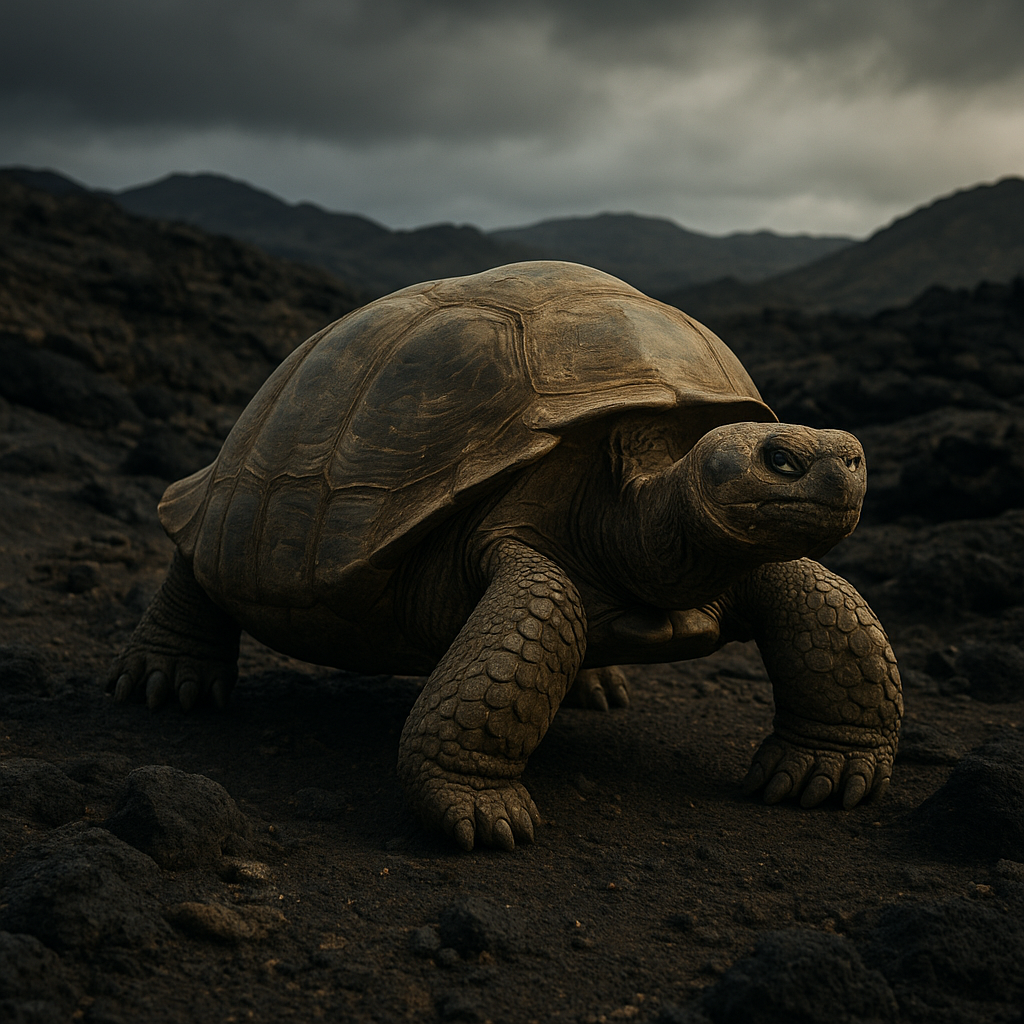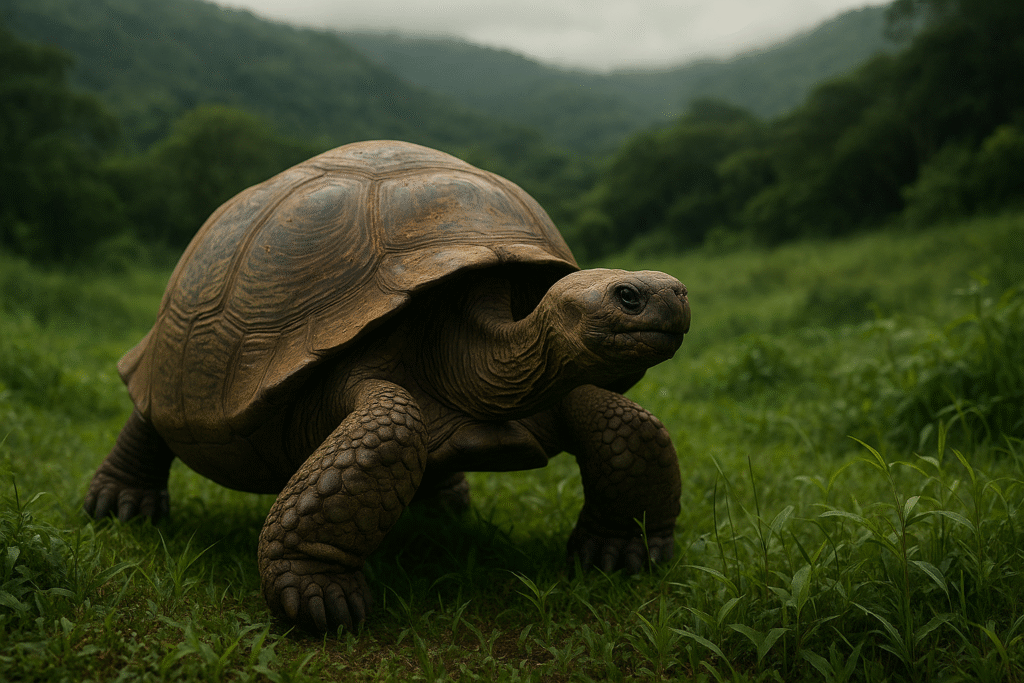On the volcanic islands that dot the Pacific, where lava meets ocean and the winds carry salt and silence, lives a creature that embodies endurance itself: the Galápagos Tortoise. To look upon one is to glimpse time made flesh. With shells shaped like ancient domes and eyes that move with deliberate calm, these reptiles are not just animals—they are monuments.

Ancient Architects of the Islands
The Galápagos Tortoise (Chelonoidis nigra complex) has lived upon these islands for centuries, shaping their ecosystems with each slow step. Their grazing clears vegetation, creating pathways that allow other species to thrive. Seeds cling to their shells, passing from one part of the island to another, giving rise to forests where otherwise there might be none.
To the islands, the tortoise is not simply a resident; it is an architect, an engineer of balance. Without it, the ecosystem would crumble.
The Weight of Centuries
These giants are not bound to the human rhythm of time. They can live for more than a century, their lives outlasting generations, their shells recording the weathering of decades like geological strata. Charles Darwin himself stood before them, seeing in their diversity the seeds of his theory of natural selection. To him, their differing shell shapes spoke of adaptation, of nature’s quiet experiment in survival.
Today, their patience speaks differently: of resilience, of the quiet dignity of survival in an age when so much vanishes too soon.
Symbols of Myth and Memory
To the sailors of centuries past, the tortoise was both savior and victim. Ships carried them away by the hundreds, kept alive for months as food stores for long voyages. Yet even as they were exploited, they were revered—giants that seemed more spirit than flesh.
In local traditions, the tortoise became a symbol of the land itself, representing the weight of the islands, the permanence of stone and earth. In mythologies worldwide, turtles and tortoises bear the world upon their backs. In the Galápagos, that metaphor feels less like myth and more like truth.
The Edge of Extinction
Yet even giants fall. By the 20th century, the Galápagos Tortoise had been driven close to extinction, victims of overharvesting, introduced predators, and the destruction of their habitats. The tale of Lonesome George, the last of his subspecies, became a global symbol—his lonely existence a mirror of what humanity stands to lose when neglect becomes habit.

Though conservation has revived many populations, their fragility endures. Each tortoise that lumbers across volcanic stone carries not only its own life but the fragile weight of an entire ecosystem’s survival.
Lessons in Stillness
To stand before a Galápagos Tortoise is to confront the nature of patience. Where humans race, the tortoise endures. Where we seek immediacy, it persists. Its stillness is not weakness but strategy, a quiet refusal to be hurried by the fleeting noise of the world.
In its eyes, dark as volcanic rock, there is no fear, no rush—only the steady gaze of an ancient witness.
A Legacy to Protect
The Galápagos Tortoise is not merely a species; it is a reminder of continuity, of the possibility of life persisting through fire and storm. To protect it is to acknowledge that endurance itself is sacred—that patience, too, deserves reverence.

As the world grows louder and faster, the tortoise remains, an anchor of silence against the tide of haste. It tells us: survival is not speed; it is presence.


Reply